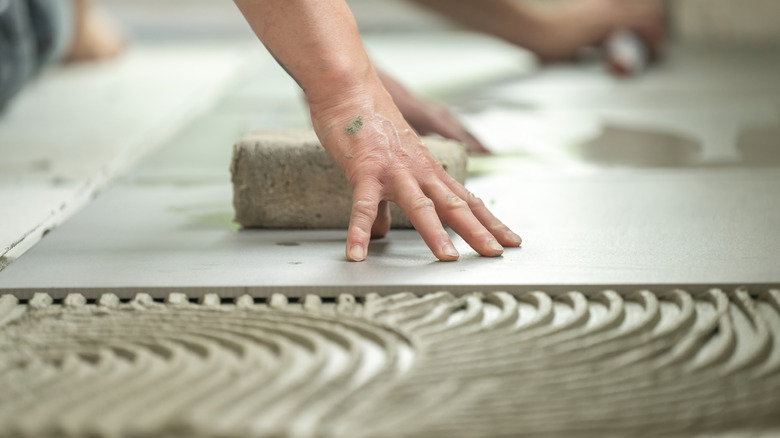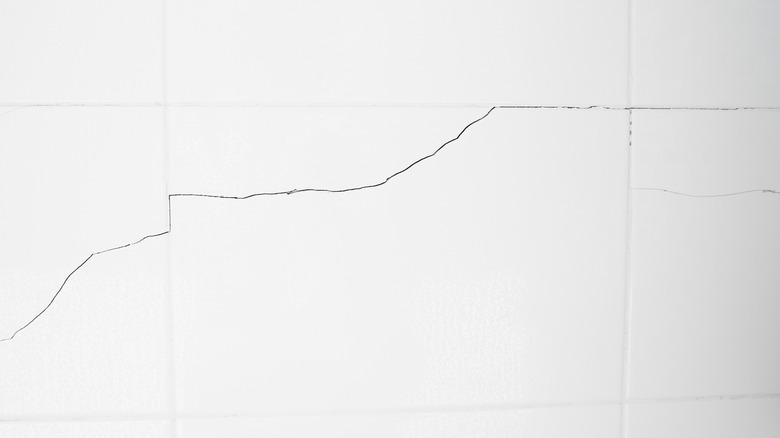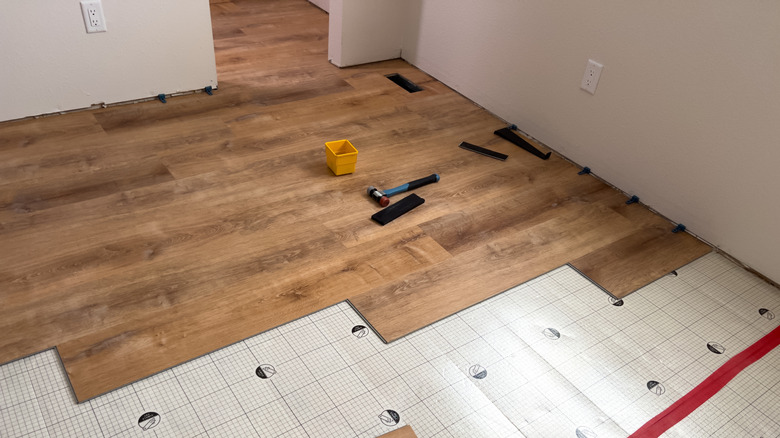The Disadvantages Of Groutless Tile You Should Know Before Considering
Groutless tile — sounds pretty dreamy, doesn't it? The promise of a sleek, modern look with no unsightly grout lines to clean or maintain is enough to make anyone consider them for their next renovation project. However, before diving headfirst into a groutless tile adventure, you must know that these tiles aren't as perfect as they seem. While they are visually appealing, they are hard to install and can leave you with a few water-related worries.
You might think installing groutless tile is as easy as laying down the tiles and calling it a day. Well, think again. Groutless tiles require precise cutting and fitting to ensure a perfect, seamless surface. Even a small miscalculation can result in gaps or an uneven floor, leaving you with a not-so-smooth surface. Because of this, groutless tiles require professional installation unless you want a floor that looks like it was done by a five-year-old with a toy hammer.
Then, there's the risk of water infiltration. Without grout, there's nothing to fill in the gaps between the tiles, so water can sneak in under the edges over time. This is especially problematic in areas like bathrooms or kitchens where moisture is inevitable. Water creeping under the tiles can lead to mold, mildew, and even structural damage if left unchecked. While grout might seem like the villain in the groutless tile story, it plays an important role in sealing out moisture and preventing long-term damage.
Maintenance and cleaning tips for groutless tiles
If you still think groutless tiles are the way to go, here are some ways you can keep them looking fresh. First off, when it comes to cleaning your tile floors that don't have grout, the key is gentleness. It's tempting to grab that heavy-duty cleaner you use for your counters, but groutless tiles are delicate and can scratch easily. Stick to gentle, non-abrasive cleaning solutions to protect the tile's surface and keep it looking new. A soft cloth or microfiber towel is your best friend here.
After you've cleaned your groutless tiles, there's one more step that's often overlooked: drying. Leaving water droplets on the surface can leave streaks, water spots or worse — damage the surface over time. Drying the surface after each cleaning session helps maintain that shiny, flawless finish.
Lastly, take it easy on the heavy stuff. Without grout, the edges of groutless tiles are more exposed and vulnerable to damage. Dropping a heavy pot or dragging furniture across the floor could lead to cracks or chips. The lack of grout means the tiles don't have the same protective buffer against this kind of impact. So, try not to play demolition derby in any room with groutless tiles.
Alternatives to groutless tiles you should consider
If, after all this, you're feeling a little hesitant about groutless tiles, there are plenty of alternatives to consider. One great option is natural stone slabs. These slabs, made from materials like marble or granite, offer a smooth, continuous surface similar to groutless tiles. Since they come in large pieces, they can cover vast areas without grout lines, giving your space a luxurious feel. However, natural stone can be expensive, so it's not the most budget-friendly option. But if you're willing to invest in that high-end look, it's definitely worth considering.
For something a little easier on the wallet (and the maintenance), luxury vinyl plank flooring is a fantastic alternative. Vinyl planks come in a wide variety of styles, from wood look to stone look, and they don't require grout. They are easy to install, less likely to be damaged by water, and often much more affordable than natural stone. And vinyl planks are soft underfoot and durable, making them a great choice for high-traffic areas.
Finally, large-format tiles offer a happy medium between groutless tiles and traditional tiles. These tiles are simply larger, which means fewer dirty grout lines. They give you that seamless modern look without the need for grout, and they come in a variety of materials, including porcelain, ceramic, and even stone.


